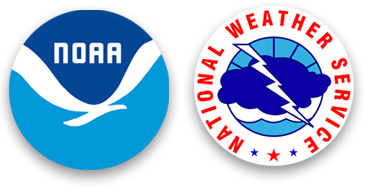Using Ocean Modeling to Track Nuclear Contamination: NWS Responds to the Fukushima Daiichi Disaster - Part 1 - National Weather Service Heritage

Using Ocean Modeling to Track Nuclear Contamination: NWS Responds to the Fukushima Daiichi Disaster - Part 1
By Emily Senesac (emily.senesac@noaa.gov)Editor’s Note: This article is the first of two installments.
While the missions of both the National Weather Service (NWS) and the National Oceanic and Atmospheric Administration (NOAA) are focused on domestic climate and environmental efforts, catastrophic environmental events occur all over the world. When disaster strikes, whether at home or abroad, having global forecasting and observation capabilities can be invaluable to first responders, decision makers, and the public. This proved to be true in the aftermath of the 2011 Fukushima Daiichi nuclear disaster, when the NWS was one of few groups with the technology to help.
Hendrik Tolman, now Senior Advisor for Advanced Modeling Systems, became the chief of the Marine Modeling and Analysis Branch of the NWS, the department that monitors the oceans, waves, and sea ice, in 2007. It was decided that Tolman’s office would begin to implement an ocean model, a capability that depicts how weather affects the ocean’s movement. However, instead of starting from scratch or focusing on a model that was exclusively domestic, Tolman launched a collaborative effort with the US Navy to adopt their global ocean model. Talks and development occurred for the better part of three years, and by early 2011, the NWS was running their global application of the HyCOM ocean model on a daily basis.
On March 11, 2011, a major earthquake occurred off the coast of Japan’s main island. Known as the Great East Japan Earthquake, this was a rare and complex type of event known as a “double quake” with a shocking duration of almost three minutes. In the aftermath of this record-breaking earthquake, a “major” tsunami was generated in the Pacific. Though waves were noticeably higher on both sides of the ocean, reaching just under 10 feet on the South American coastline, Japan was hit the hardest--a wave nearly 50 feet tall slammed into the coast of Japan, resulting in the loss of more than 19,000 lives and the destruction of more than a million buildings and homes.
To make matters worse, several nuclear power plants located along the coast experienced damage -- the Fukushima Daiichi plant, in particular. Although plants like this are surrounded by a high seawall designed to protect the plant from flooding or large waves, the sheer height of the 2011 tsunami towered over the barrier. As a result, the power supply and cooling mechanisms were disabled, and the nuclear cores began to melt, leading to a full-scale nuclear disaster. Most of the radiation detectors at the plant had been disabled by the flooding, so as radioactive emissions were being released into the ocean and atmosphere, it became urgent to determine the levels of contamination. Due to their timely adoption of a global capability, the NWS was one of few groups that could provide aid amid this disaster.
“We had literally been running that model less than a month before Fukushima hit,” Tolman recalls. “And we were suddenly the only show in town that could do this in Japan, other than the Navy.”
In the months to come, Tolman and his team* would track the nuclear contaminants as they traversed the world’s oceans, helping planners prepare while minimizing international panic.
_____________
* In addition to Tolman, the NWS team consisted of Zulema Garaffo, Hae-Cheol Kim, Todd Spindler, Ilya Rivin, and Avichal Mehra.
